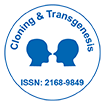
Cloning & Transgenesis
Open Access
ISSN: 2168-9849

ISSN: 2168-9849
Xiaojing Kang*, Junqin Liang, Li Chai, Lvjiao Peng, Shirong Yu, Xiujuan Wu and Juan Zhao
Vitiligo is associated with different human leukocyte antigens (HLAs), but the relationship of HLAs and Uygur population people is unknown. The study aimed to investigate whether there is an association between HLADRB1* 1201/02, DRB1*0701/02, DQA1*0302, and DQB1*0303 and the incidence of vitiligo in a Chinese Uygur population and further evaluate their effect on the clinical features of vitiligo. A total of 308 Chinese Uygur patients with vitiligo and 310 healthy controls were included in the study. HLA-DRB1*1201/02, DRB1*0701/02, DQA1*0302 and DQB1*0303 allele distribution was investigated by polymerase chain reaction (PCR), the sequence-specific primer method. Family history, clinical types, phase, etc. were evaluated. The data were analyzed by the chi-square test. A significant difference was found in the distribution of HLA-DRB1*1201/02, DRB1*0701/02, DQA1*0302, and DQB1*0303 between the vitiligo patients and healthy subjects in the studied population. A comparison of the clinical features of DRB1*1201/02 (+) and DRB1*1201/02 (-) patients revealed a significant difference between localized and generalized vitiligo patients, (OR: 0.55, 95% CI: 0.31–0.99, P = 0.044). The progressive phase of vitiligo was more common for DRB1*1201-positive patients than for HLA-DRB1*1201/02-negative patients (OR: 3.18, 95% CI: 1.48–6.82, P = 0.002). The other clinical features were similar in both groups. In conclusion, our findings suggest that HLA-DRB1*1201/02, DRB1*0701/02, DQA1*0302, and DQB1*0303 are associated with vitiligo susceptibility, and DRB1*1202/02-positive patients have some obvious clinical differences from DRB1*1202/02-negative patients in the Chinese Uygur population.